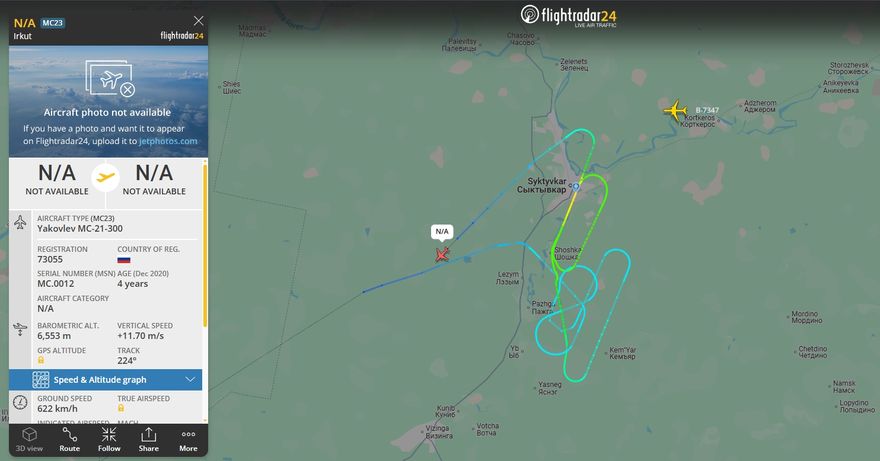On July 22, the MC-21-310 prototype aircraft, tail number 73055, completed a flight along the Moscow–Syktyvkar–Moscow route as part of ongoing manufacturer validation trials. The primary objective was a comprehensive assessment of Russian-made inertial navigation systems, the Traffic Collision Avoidance System (TCAS), additional navigation aids, the weather radar, and domestically produced communication systems.
The flight crew consisted of Oleg Mutovin, Class 1 test pilot and Hero of Russia, and Roman Taskaev, Director of Flight Testing, honored test pilot of the Russian Federation and Hero of Russia—both representing Yakovlev PJSC. A spokesperson from the Gromov Flight Research Institute confirmed this information to “Aviation of Russia”.
“The flight followed a standard instrument departure (SID) procedure. The crew navigated established airways, utilizing onboard navigation systems for precise route tracking and maintaining continuous communication with air traffic control to ensure coordination and flight safety within controlled airspace,” the source stated.
A Standard Instrument Departure (SID) is a published departure procedure that specifies the route, climb gradient, and restrictions designed to optimize air traffic flow, ensure obstacle clearance, and reduce noise over populated areas. Each SID is tailored to a specific runway and is published in the Aeronautical Information Publication (AIP). Pilots are required to strictly adhere to these procedures using onboard navigation instruments to exit the airport vicinity and transition to en route airways. SIDs help maintain order in congested airspace, align with air traffic management requirements, and minimize delays.

According to the Gromov Institute representative, a descent and holding pattern were executed near Syktyvkar. “The crew then performed two instrument approaches using the ILS (Instrument Landing System) to evaluate its performance, executing missed approaches as part of the procedure. The return leg to Ramenskoye was also flown along standard airways,” the spokesperson added.
Additionally, the Russian-manufactured weather radar was tested during the flight. Upon re-entering the Moscow airspace, the crew received a SIGMET warning for hazardous meteorological phenomena associated with thunderstorm activity. Thunderstorm cells were successfully avoided, with the aircraft’s weather radar providing critical situational awareness.
Flight tests along established civil airways are conducted to validate the aircraft’s safety and reliability under real-world operational conditions. These flights assess the performance of navigation and communication systems, automatic flight controls, and crew interaction with air traffic services in compliance with ICAO standards and international regulations.
Operating along standard civil routes enables comprehensive evaluation of collision avoidance systems, navigation equipment, and flight control systems in actual air traffic environments. Such test campaigns ensure the thorough integration and verification of all onboard systems and aircraft design features, maximizing flight safety. This approach guarantees objective, reproducible results critical for obtaining type certification and operational approval.



